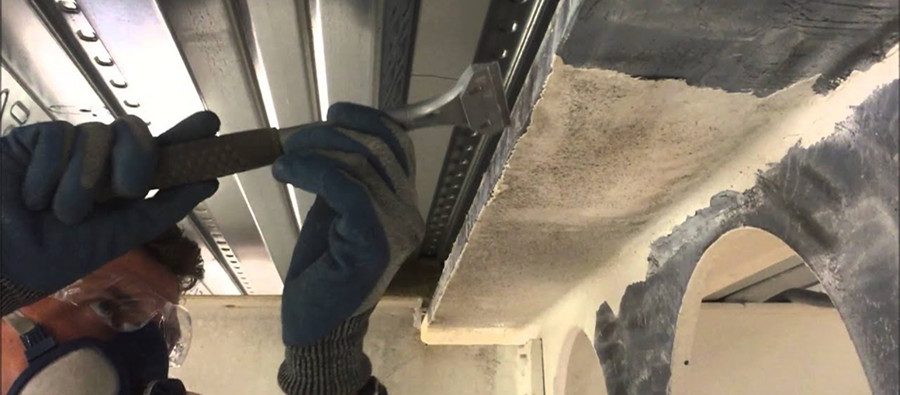What is induction paint and coating removal?
Induction heating for paint and coating removal is a fast, safe, and environmentally friendly method of stripping paint, epoxy, rubber, or other bonded coatings from metal surfaces. Unlike traditional abrasive or chemical techniques, induction heating removes coatings without damaging the underlying metal or creating hazardous waste.
Induction heating for paint and coating removal works by using an induction coil to generate a high-frequency electromagnetic field that heats the metal substrate directly. As the metal heats up, the bond between the coating and the metal weakens, causing the paint or coating to blister and lift off—making it easy to scrape or peel away without mechanical force.
This method is particularly effective on steel surfaces coated with thick paint, rust-proofing layers, or thermoset polymers. It’s widely used in industries such as shipbuilding, aerospace, oil & gas, infrastructure maintenance, and rail transport—where large steel structures require safe, controlled coating removal with minimal downtime.
At LJINDUCTION, we offer portable and fixed induction heating systems engineered for coating removal tasks in both field and workshop settings. Our equipment provides fast, uniform heating while minimizing damage, emissions, and clean-up requirements.
Benefits of Using Induction for Paint and Coating Removal
Induction heating for paint and coating removal offers a wide range of advantages over blasting, sanding, or chemical stripping—especially when safety, surface integrity, and speed are critical.
Induction heating is a flameless, non-contact process that does not involve open flames or toxic chemicals. This significantly reduces fire risk, improves operator safety, and eliminates the need for hazardous waste handling.
Induction heating systems remove coatings quickly and precisely, allowing operators to target specific areas without damaging adjacent materials or overheating sensitive components. This makes them ideal for maintenance on bridges, pipelines, ships, tanks, and industrial machinery.
LJINDUCTION’s coating removal systems provide clean, efficient performance with minimal surface prep and no secondary waste like dust or blast media. The result is a faster return to service, lower labor costs, and reduced downtime for repainting or re-coating operations.
Additionally, induction heating for paint and coating removal helps preserve the geometry and integrity of precision components—critical in industries like aerospace and energy, where surface fatigue or deformation cannot be tolerated.
Whether used in manual spot-removal or integrated into semi-automated stripping lines, LJINDUCTION provides reliable, adaptable solutions that meet industrial safety and environmental standards.
Examples

Brass Metal

Brass Metal

Brass Metal

Brass Metal

Brass Metal

Brass Metal

Brass Metal

Brass Metal

Brass Metal

Brass Metal

Brass Metal

Brass Metal
Popular Machine in Induction for Paint and Coating Removal
Ground Pushing Induction Paint & Coatings Removal Machine
Handhelding Induction Paint&Coatings Removal Machine
News about Induction for Paint and Coating Removal
 Inductiom Coat and Paint Remove
Inductiom Coat and Paint Remove Where is induction coating removal used?
Deprecated: preg_replace(): Passing null to parameter #3 ($subject) of type array|string is deprecated in /home/u872448966/domains/inductionheatmachine.com/public_html/wp-includes/kses.php on line 1805
What is induction heating?
Benefit of using induction heating
All LJinduction heating machine
Request Evaluation of your heating requirement
Request Info
About Company



